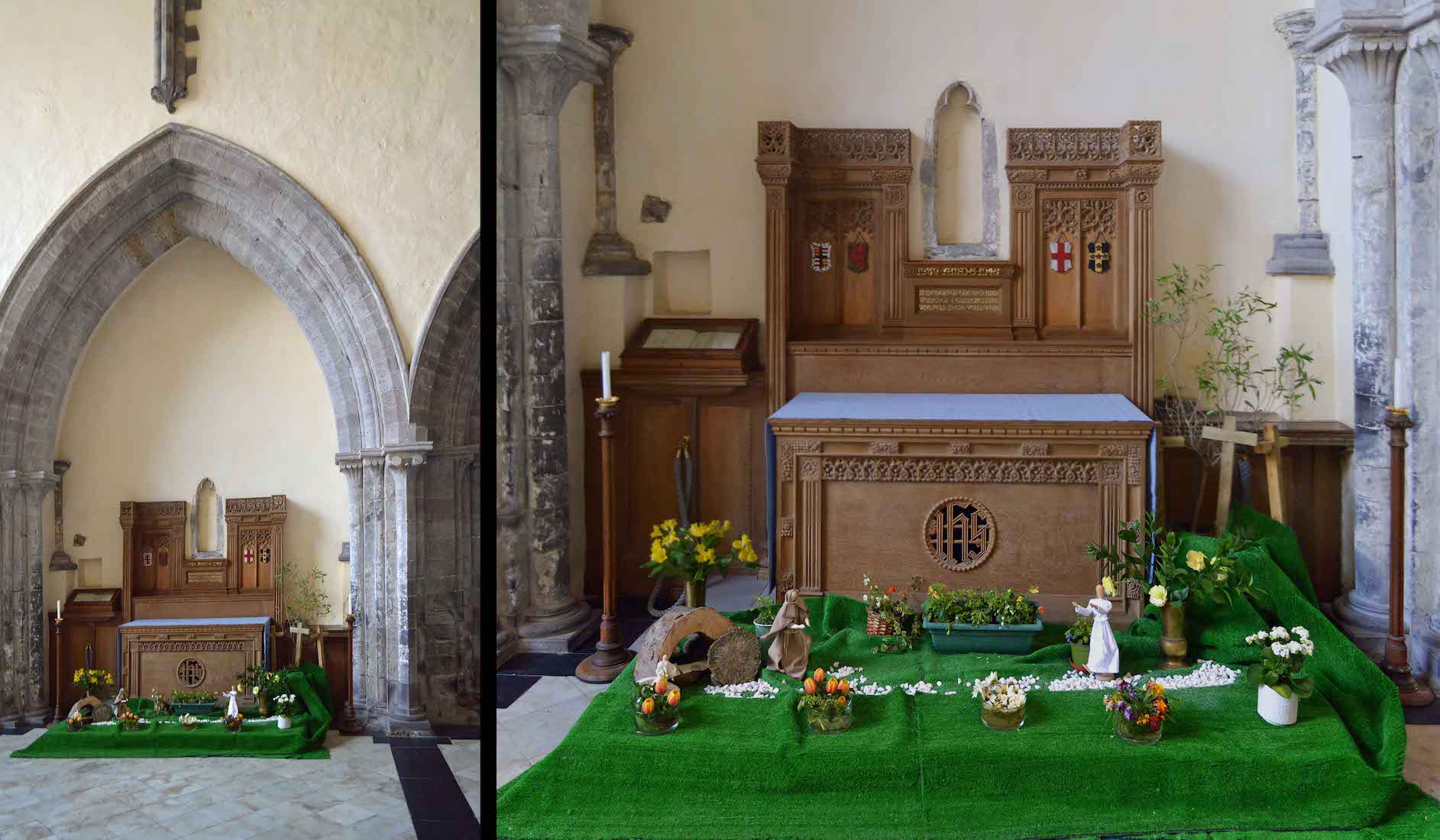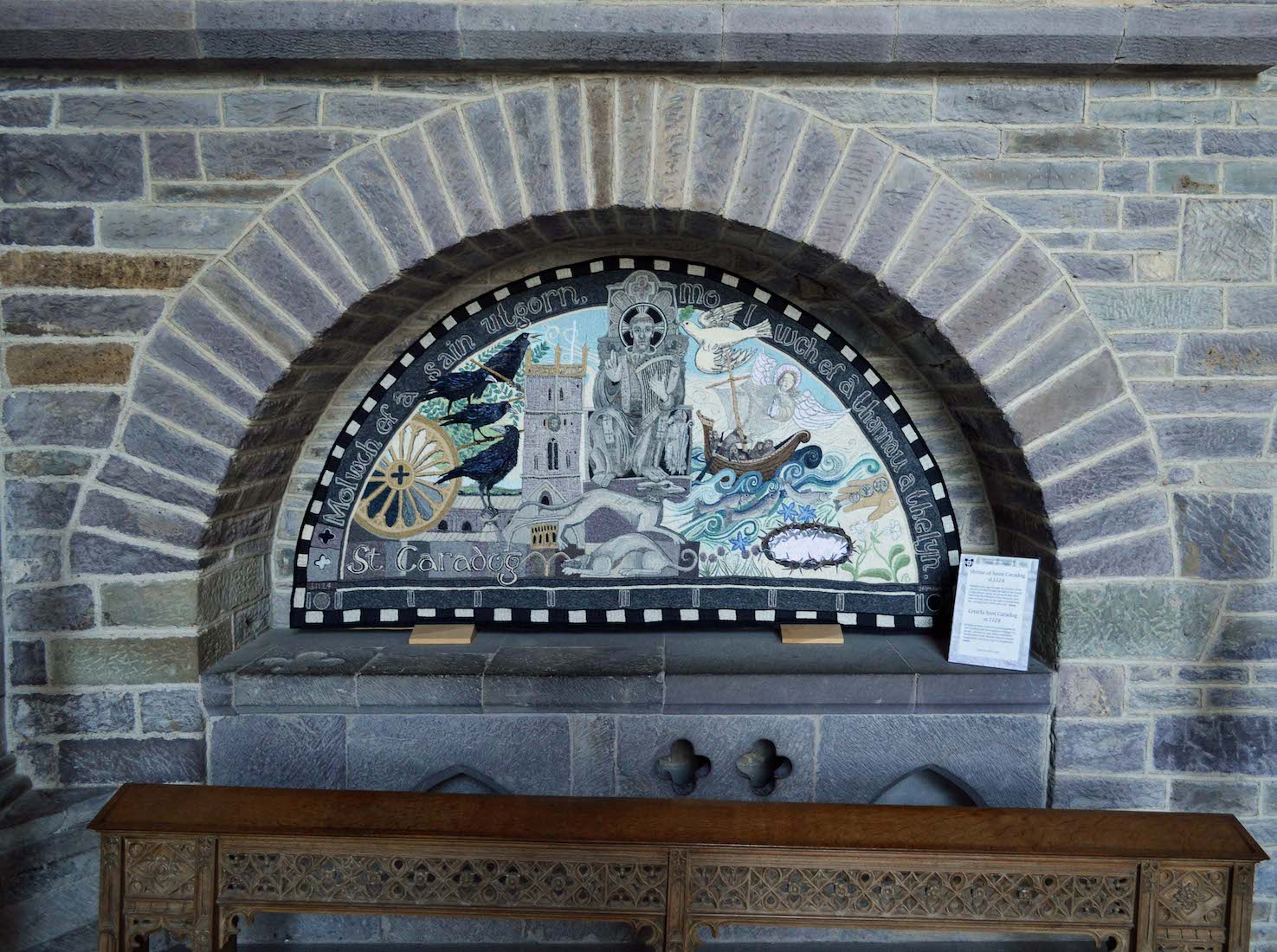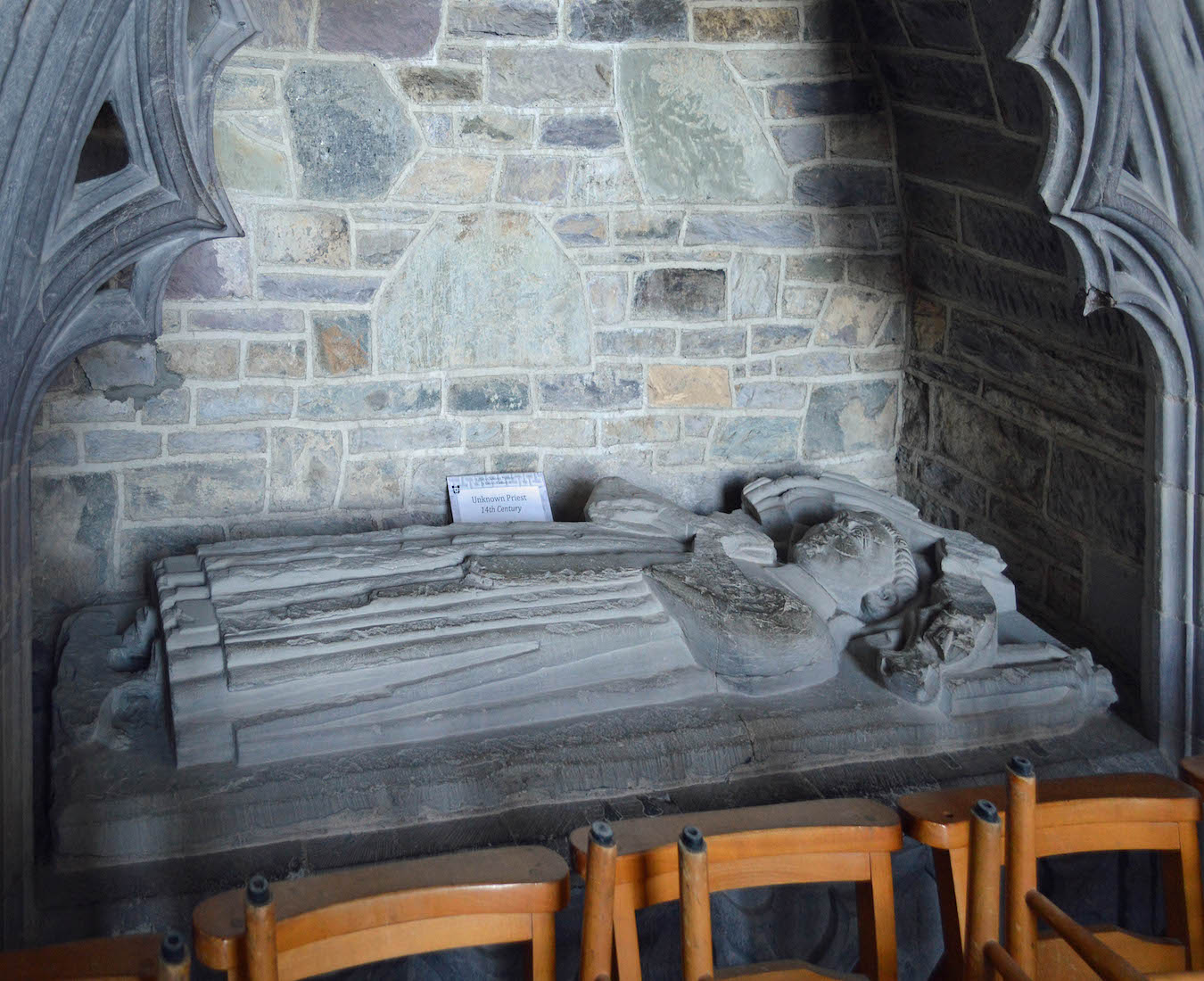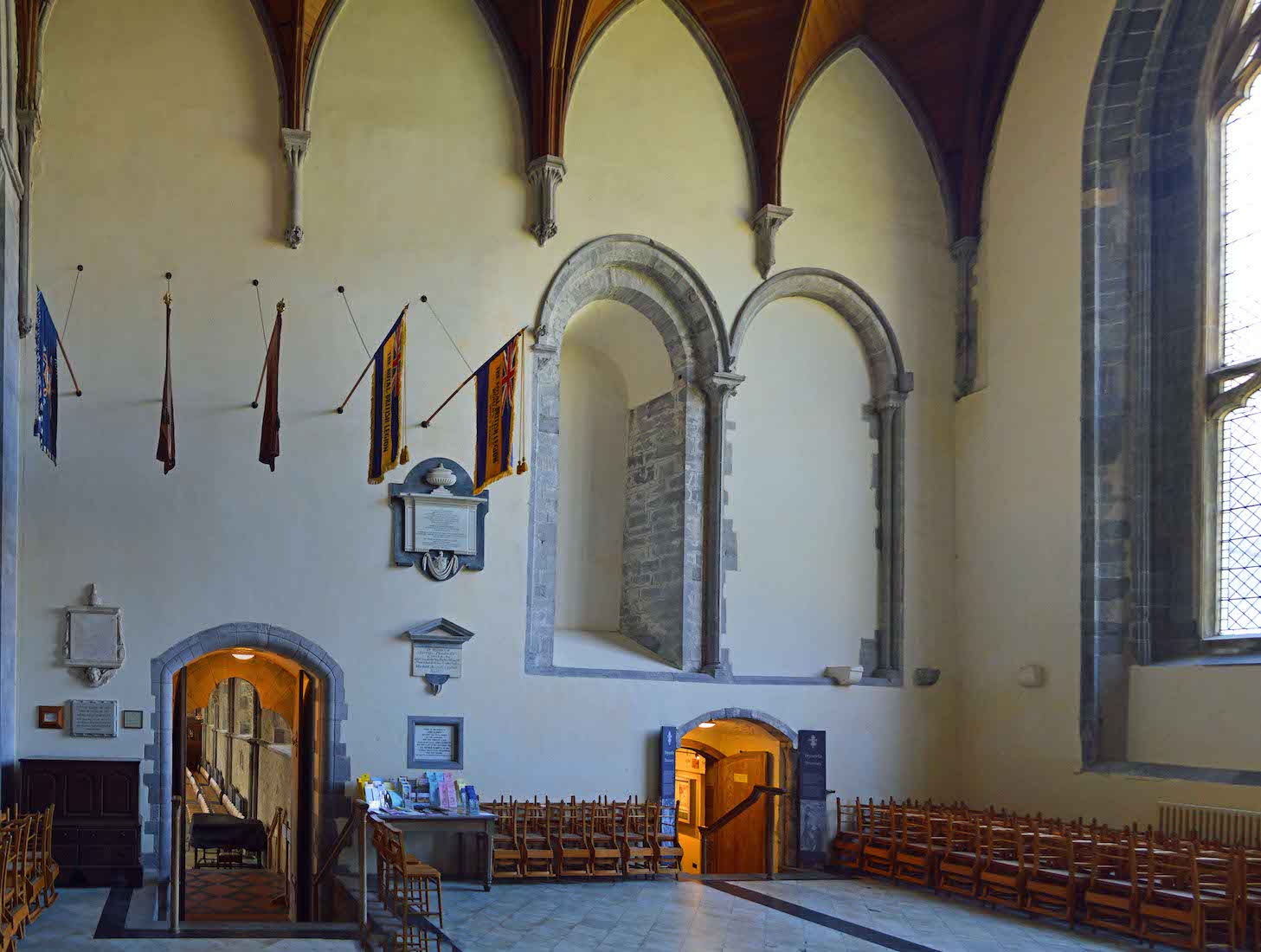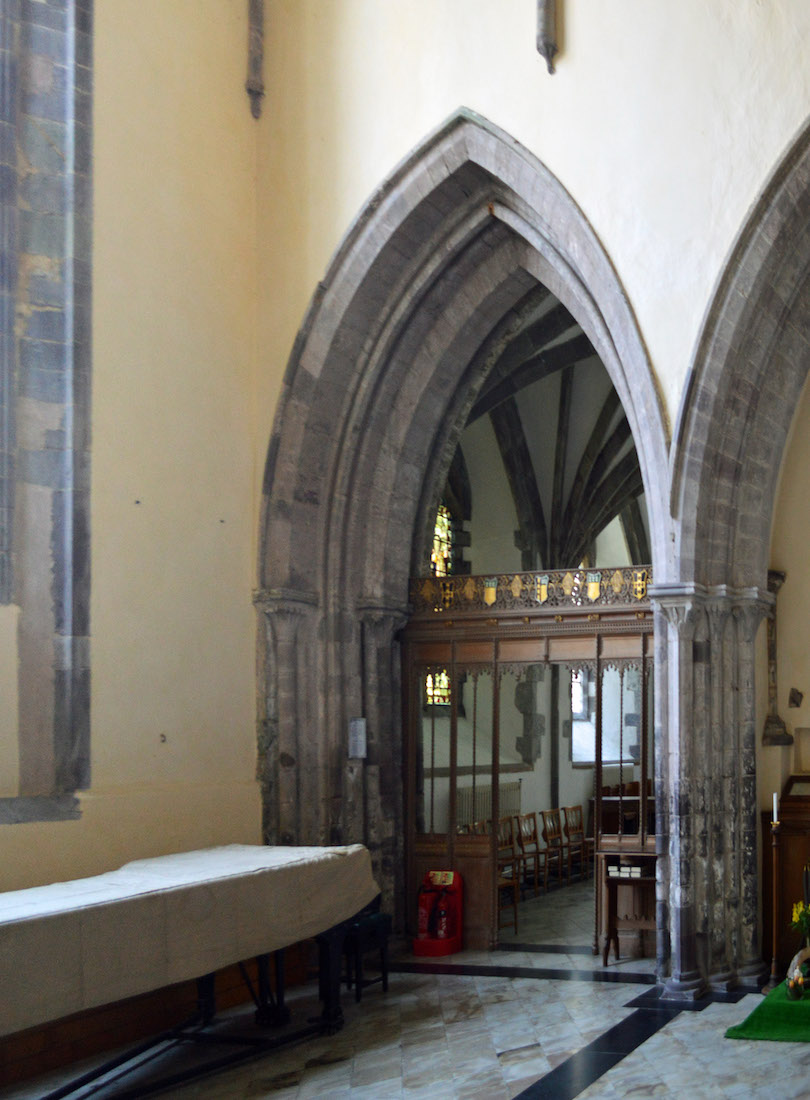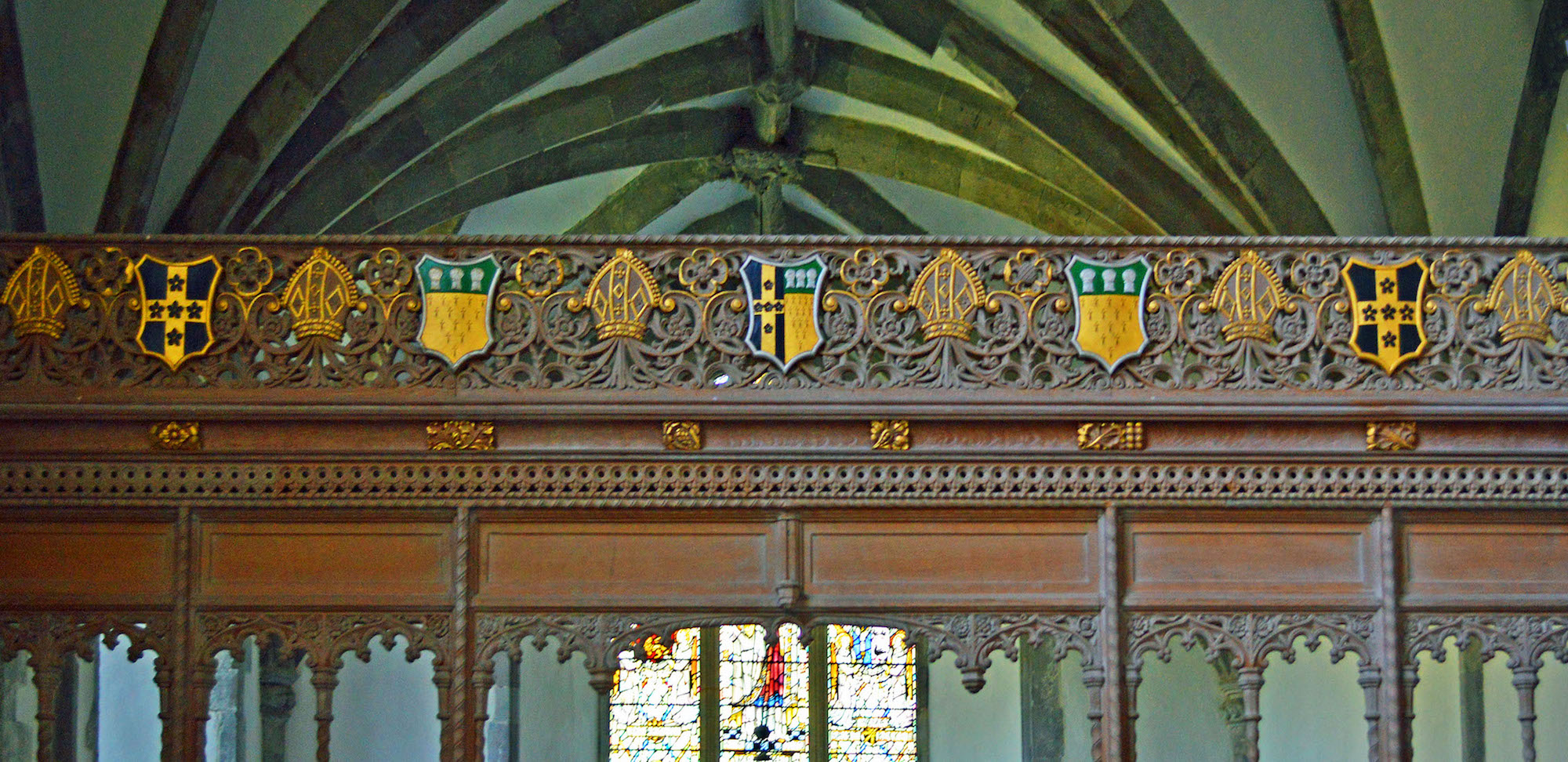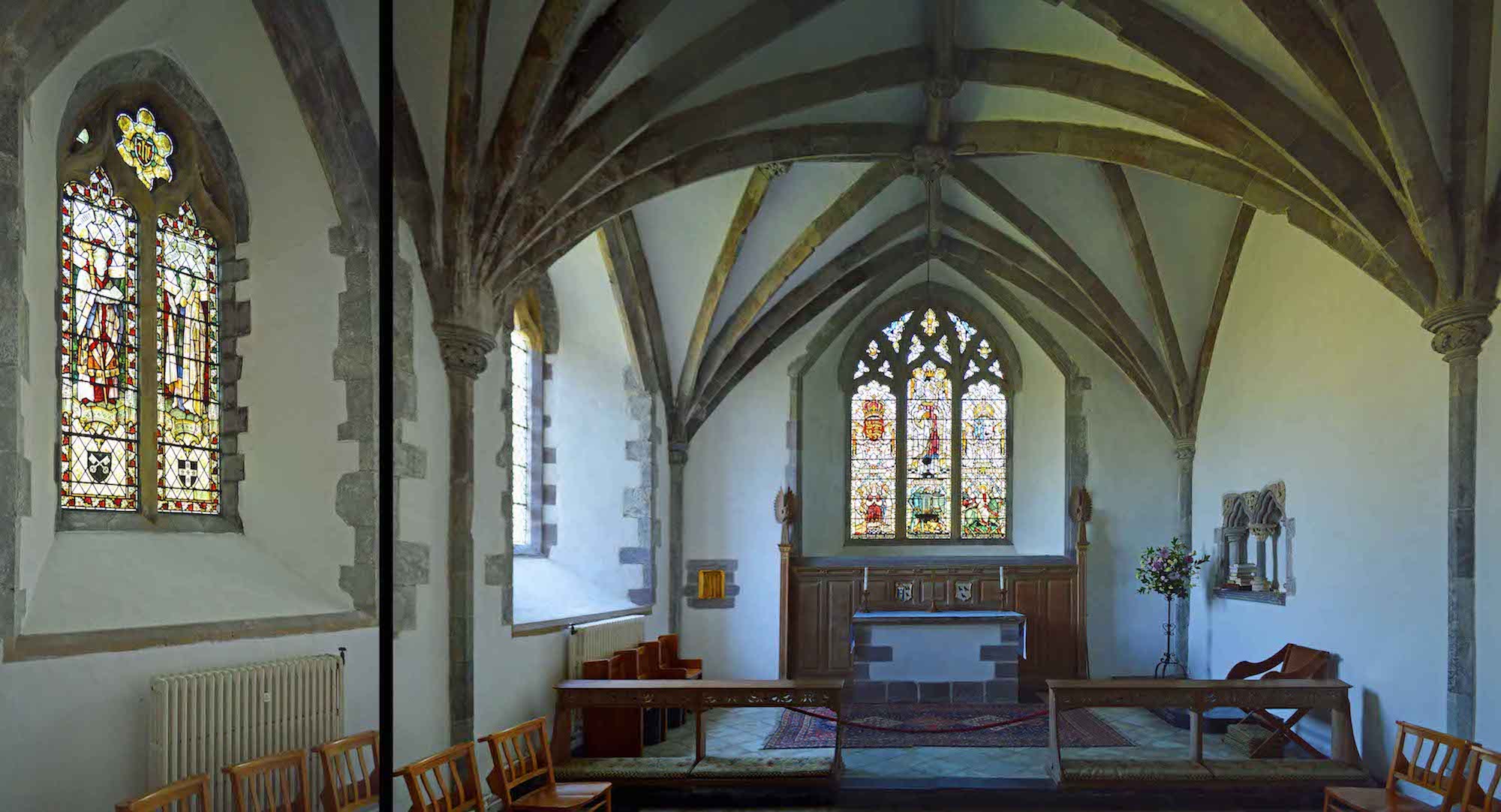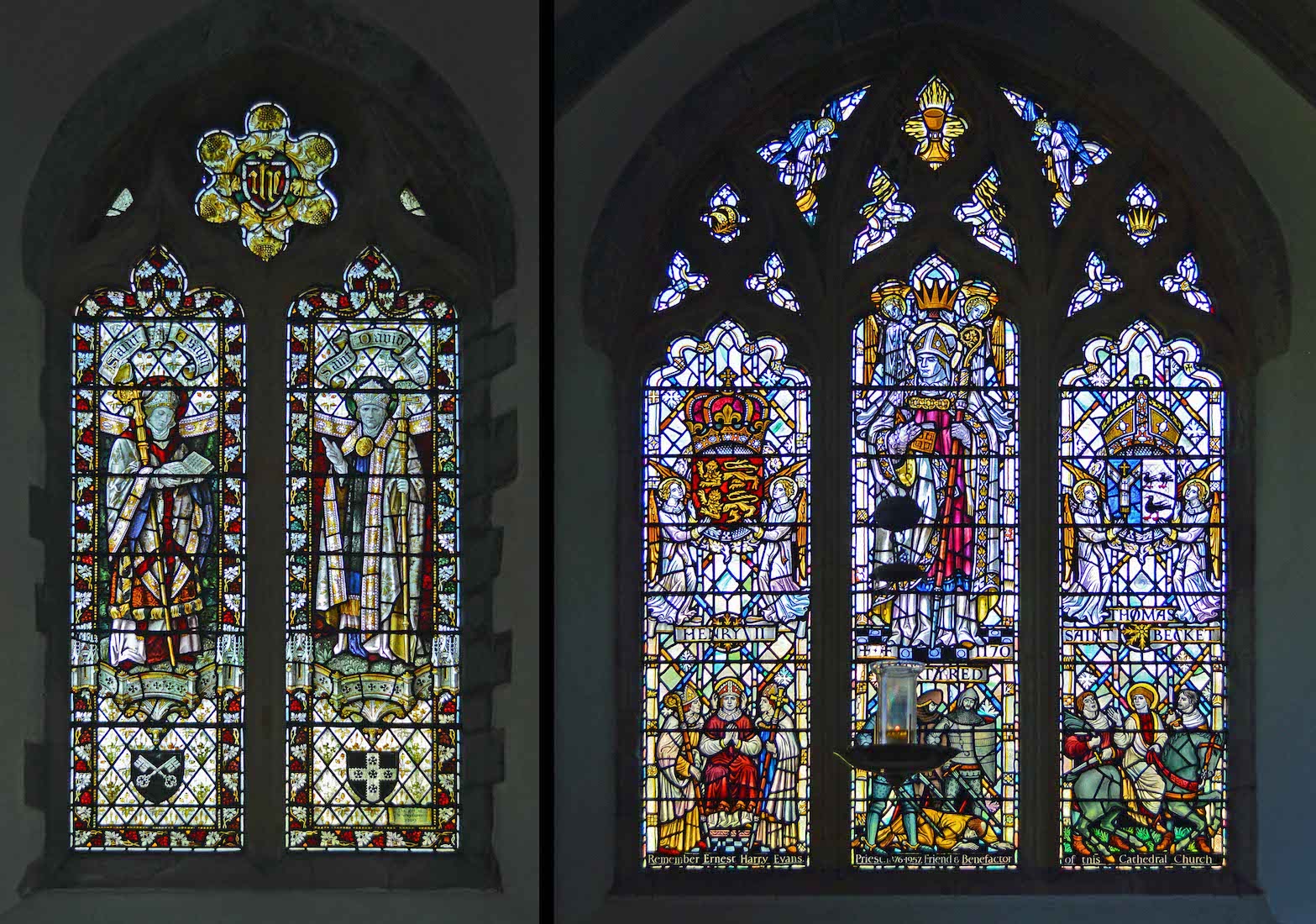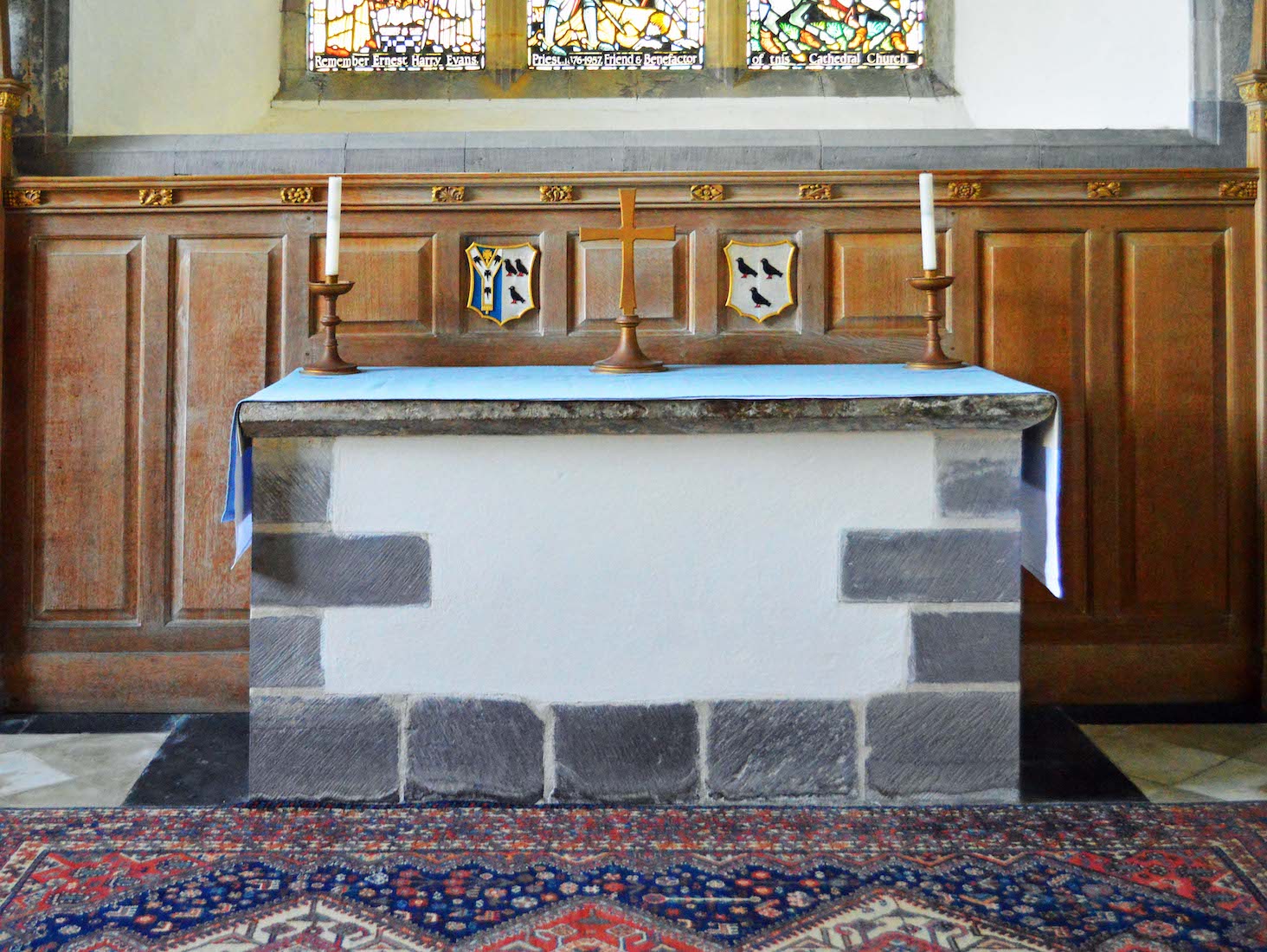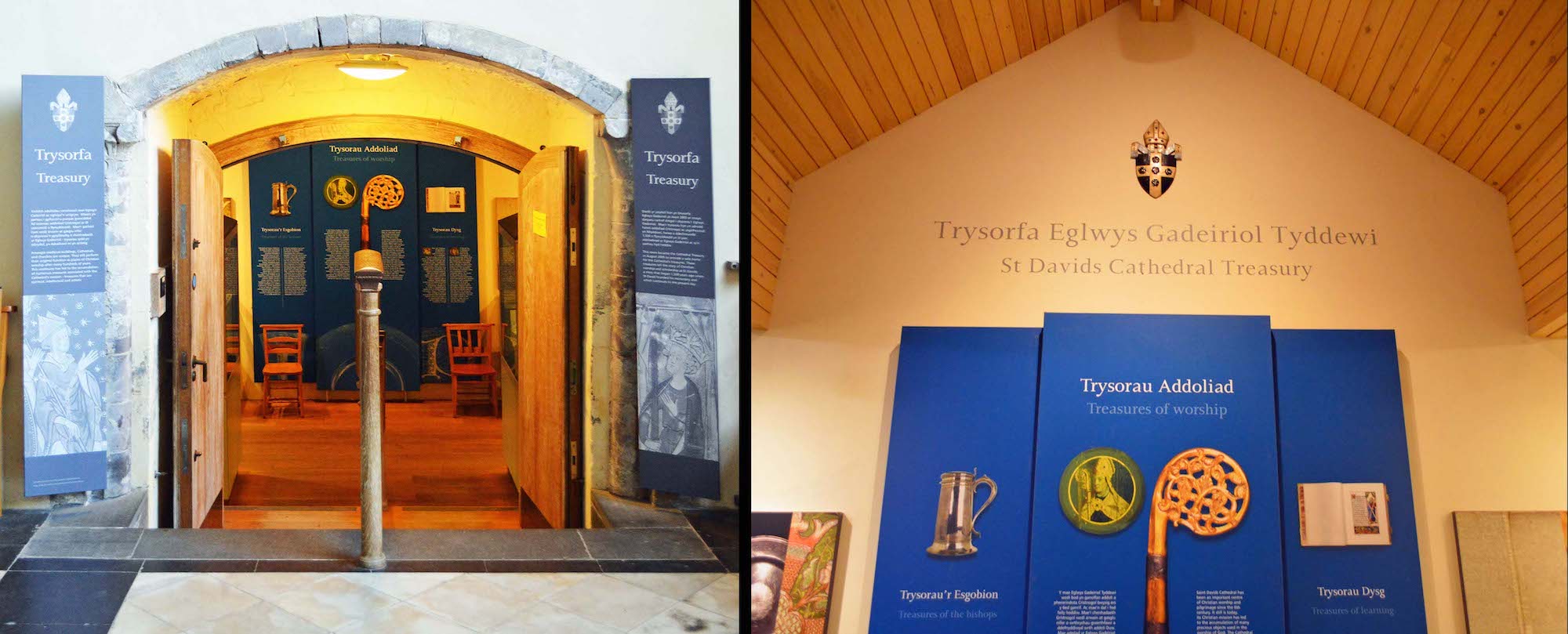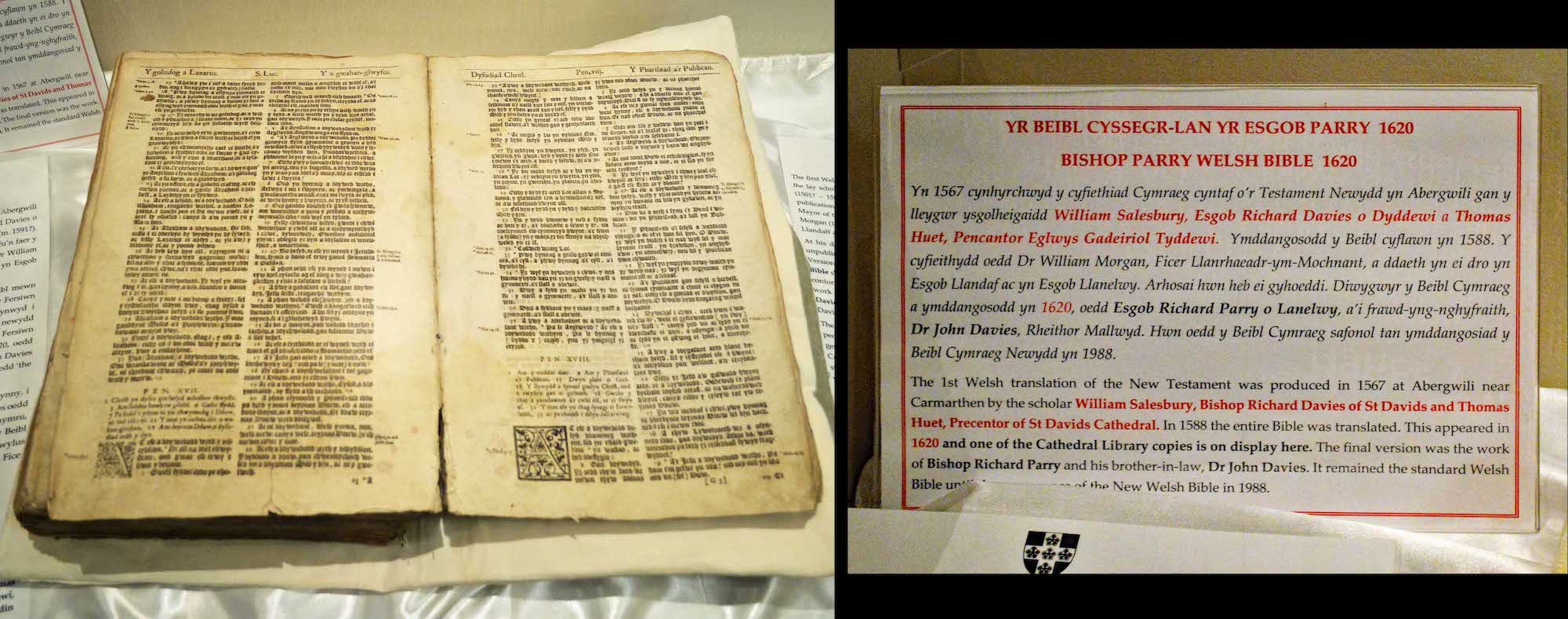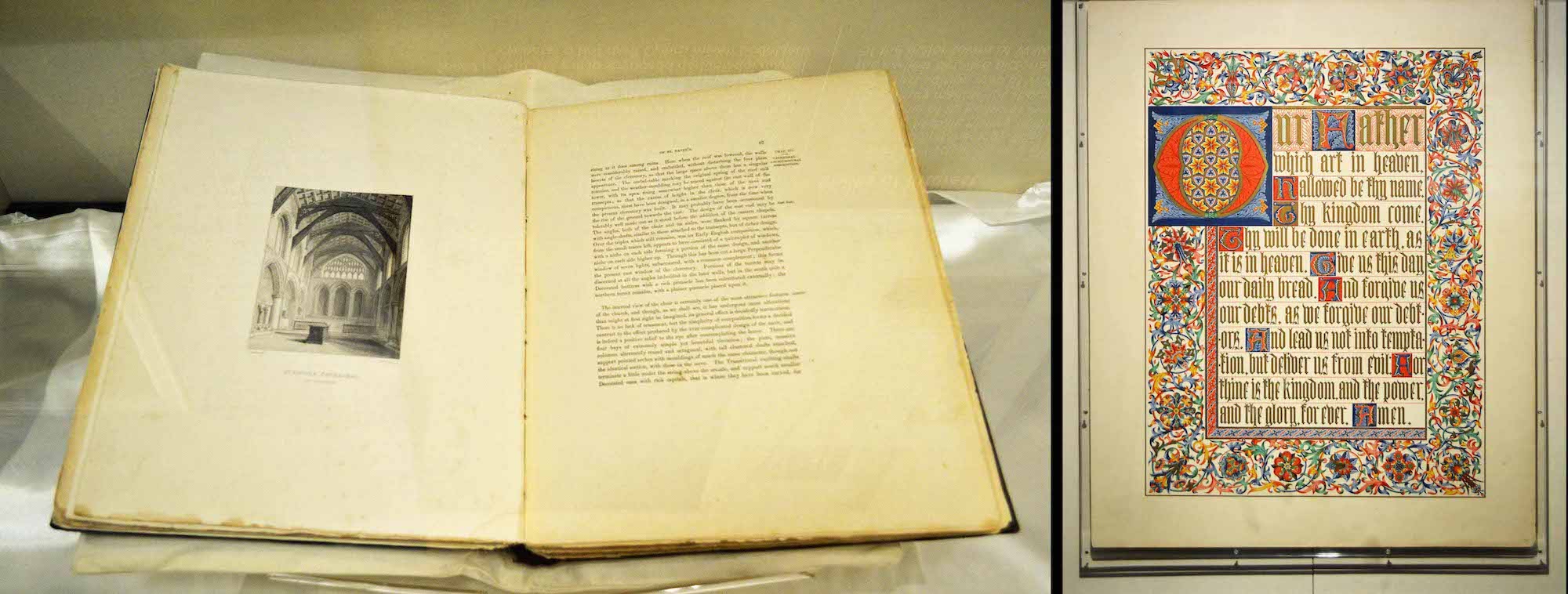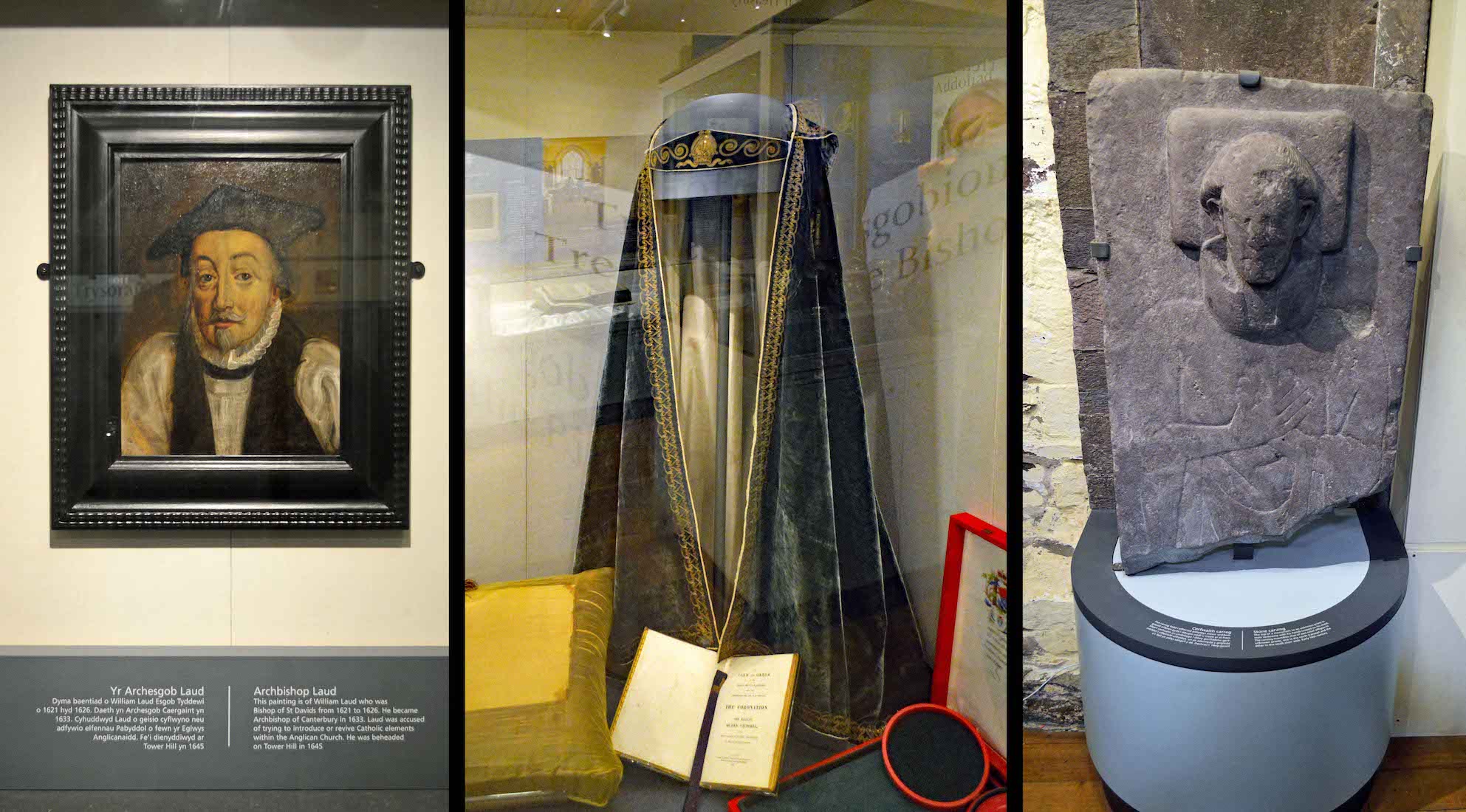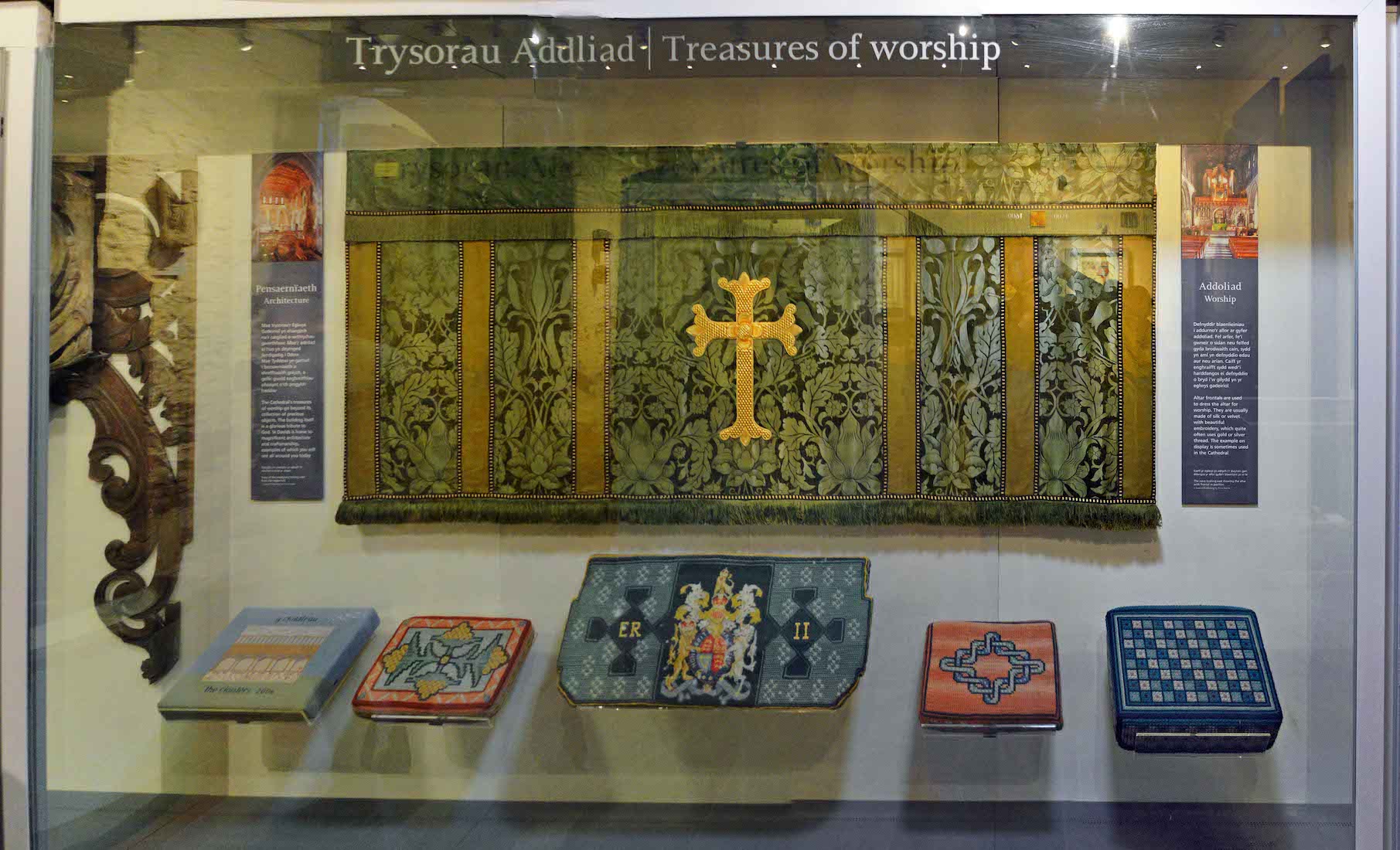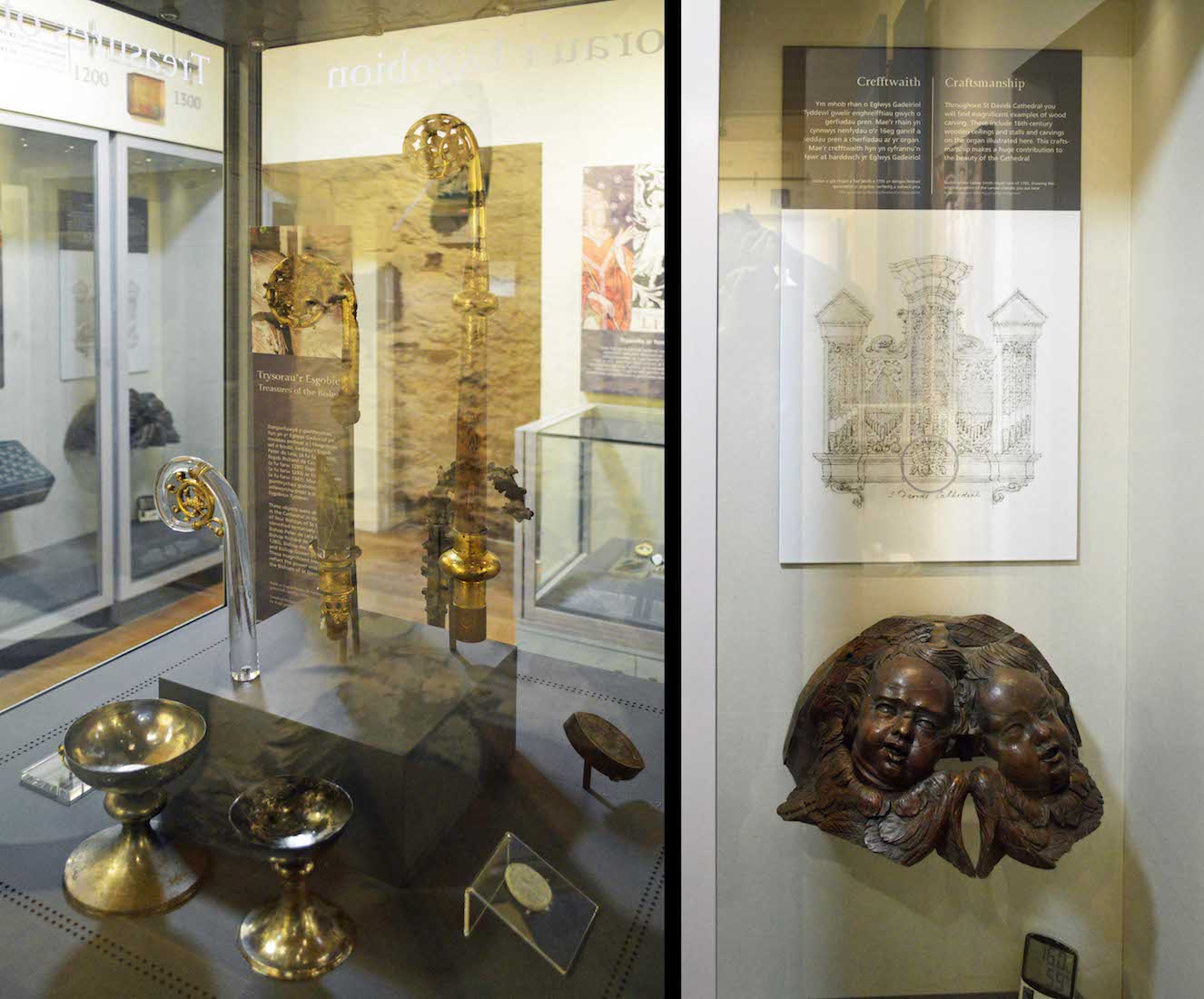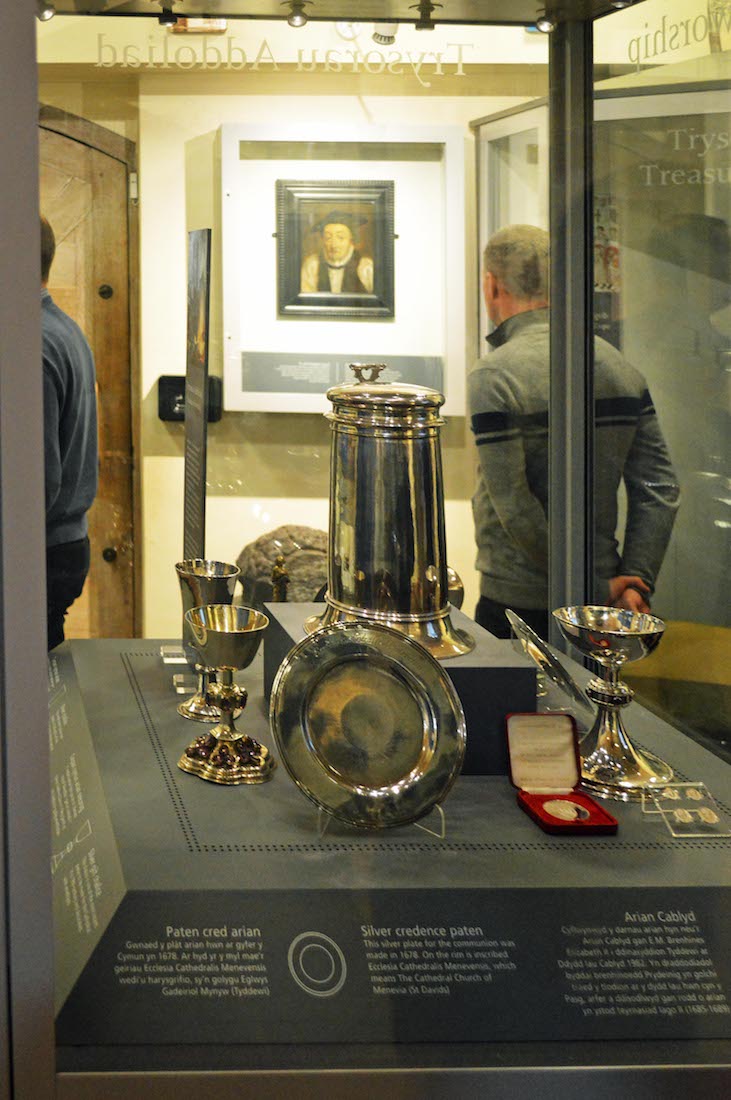101. ENTRY TO CATHEDRAL LIBRARY
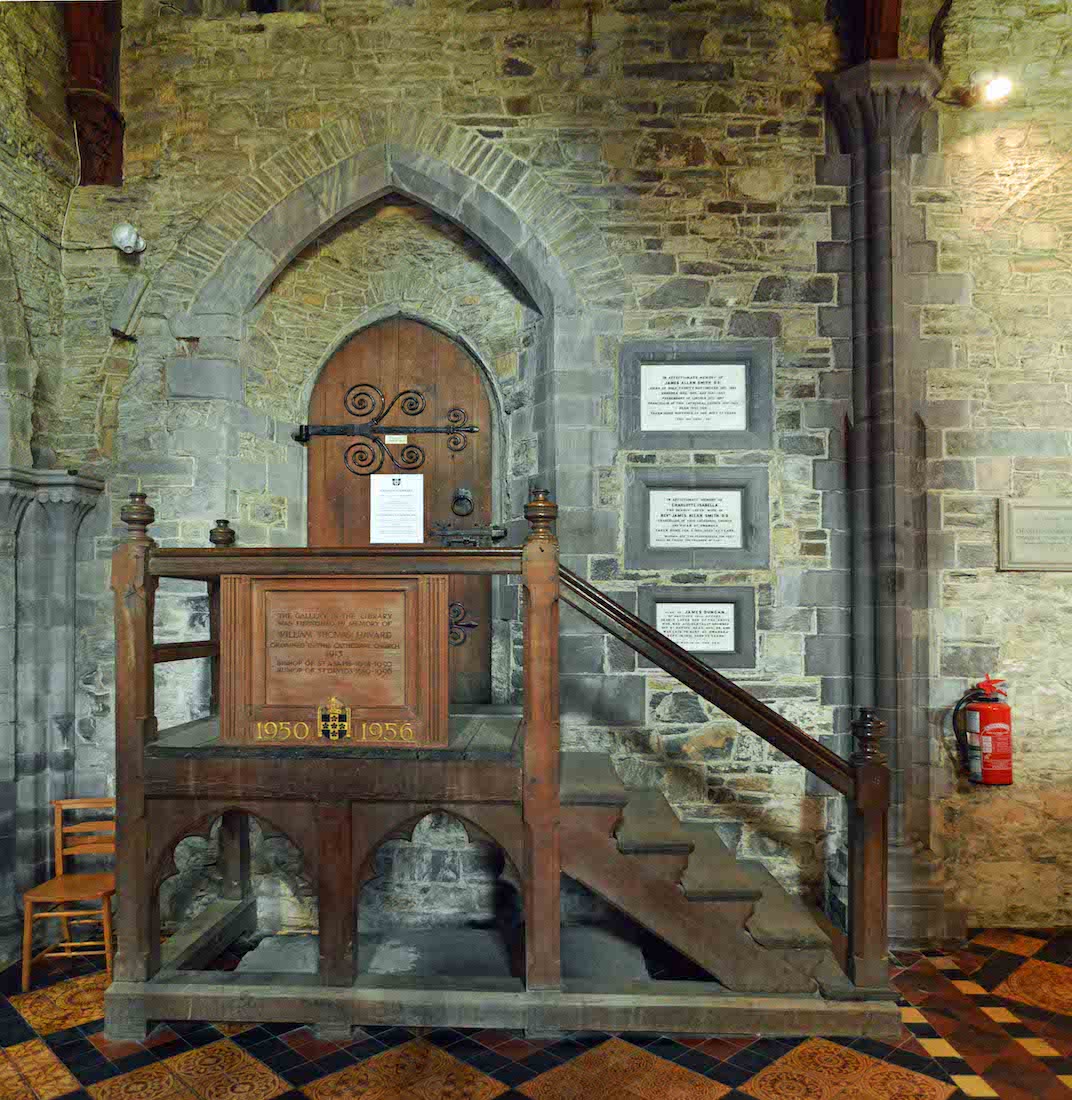
A little surprise along this North choir aisle is this set of wooden steps up to the Cathedral library. As we have seen, the Cathedral library is located above the St Thomas Becket Chapel on this side. The choir aisle next leads into the North transept. PLAN
102. NORTH TRANSEPT LOOKING SOUTH

We are now standing in the North transept looking South: the space beyond the facing arch is the quire. The South choir aisle leads in from the left, the steps down to the right would take us back to the nave. Within the transept we have an Easter garden at left, a shrine and an effigy in the facing wall, and various regimental colours (flags) hanging at right.
103. EASTER GARDEN
Many churches and cathedrals have an Easter Garden which illustrates the place where Jesus rose from the tomb. We see here the crosses of Calvary in the background. In fact, the setting here is St Andrew’s Chapel which is now the Pembrokeshire War Memorial Chapel. A page in the Book of Remembrance (at left) is turned over every day.
104. ST CARODAG’S SHRINE
This shrine and tomb of St Caradog is in the South wall of the transept. Caradog was a 12th century saint, and it is thought that his relics are still in the tomb.
105. UNKNOWN PRIEST’S EFFIGY
Next to St Caradog’s tomb is the effigy of an unknown 14th century priest.
106. WEST WALL OF TRANSEPT
Apart from the regimental colours, there is little to interest us on the West wall of the transept, except the low door at right which leads down to the Cathedral treasury. We shall come back and explore this shortly. Notice that the large transept window at right is of clear lattice glass.
107. TO ST THOMAS BECKET CHAPEL
There is a doorway just North of the Easter Garden which leads us through to the St Thomas Becket Chapel. Thomas Becket, also known as Saint Thomas of Canterbury, Thomas of London and later Thomas à Becket, was Archbishop of Canterbury from 1162 until his murder in 1170. He is venerated as a saint and martyr by both the Catholic Church and the Anglican Communion.
108. CHAPEL DOORWAY
There is a panel with a decorated frieze across the top of the doorway. There are two coats of arms at the sides which are combined in the central crest. The black shield with gold cross and five stars is the crest of St David. None of the coats of arms is that of Thomas Becket.
109. CHAPEL
The chapel has two stained glass windows, old vaulting, a simple stone altar in front of wood paneling, a covered aumbry at left and some niche shelving at right.
110. CHAPEL WINDOWS
The side window shows St Peter and St David. The main window shows King Henry II at left, St Thomas Becket at right, and the martyrdom of Becket at the King’s command at centre.
111. CHAPEL ALTAR
The simple stone altar bears a cross and two candles. Behind are two shield crests … . The crest on the right is that of Thomas Becket. The crest on the left is a combination of Becket’s crest and the Y-crest of Canterbury Cathedral.
112. TO THE TREASURY
We leave the St Thomas Beckett Chapel and walk back across the North transept to the Cathedral treasury. It is a little unusual that photography is allowed in here. A large sign at the entrance tells us that in here we will find treasures of worship, treasures of the bishops, and treasures of learning.
113. PARRY WELSH BIBLE
One of the treasures is the Parry Welsh Bible. The people of Wales are very proud of the way the Bible came to be translated into Welsh. Richard Parry lived from 1560 to 1623. He was consecrated bishop of St Asaph in 1604, but is chiefly remembered for his revised versions of the Welsh Bible and Book of Common Prayer, published in 1620 and 1621.
114. CATHEDRAL HISTORY BOOK
Also on display is a very old book telling the history of St Davids Cathedral, and a beautifully illuminated version of the Lord’s Prayer.
115. VARIOUS EXHIBITS
• The painting is of Archbishop Laud who was Bishop of St Davids from 1621 to 1626, Archbishop of Canterbury in 1633, and beheaded on Tower Hill in 1645. • This is the bishop’s cope worn at the Coronation of Queen Victoria in 1838. • This stone carving is the top of a monument to an unknown priest in mass vestments.
116. TREASURES OF WORSHIP
Shown here are various kneelers, and a beautiful altar frontal.
117. CORNER DISPLAY
This is a corner of the Treasury display, and a close up of a wood carving of two angels: an illustration of the fine standard of craftsmanship in the Cathedral.
118. PLATES AND CHALICES
Silver plates and chalices. Many cathedrals have displays like this with historic items being drawn from churches in their diocese which have closed for various reasons.
This completes our tour of St Davids Cathedral.
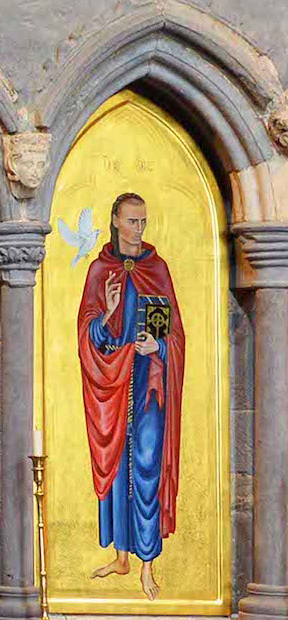
CONCLUSION
Completing this website on St Davids Cathedral has been a major undertaking, but also a very enjoyable one. I was fortunate to spend the best part of two days there, including attendance at a Choral Eucharist.
I am happy to receive constructive comments or corrections concerning this website. The best websites are the ones which have no errors! I am grateful to my wife Margie who has proof-read these pages.
The Cathedral has an excellent publication called ‘St Davids Cathedral’ which is a mine of information about the Cathedral building. I acknowledge my use of this for the text, and also the ever-helpful Wikipedia.
The link for the Cathedral website is:
http://www.stdavidscathedral.org.uk/
The photographs which appear on this site can also be found in higher resolution at:
https://www.flickr.com/photos/paulscottinfo/albums/
Paul Scott Site created 02 / 2020
TITLE PAGE

